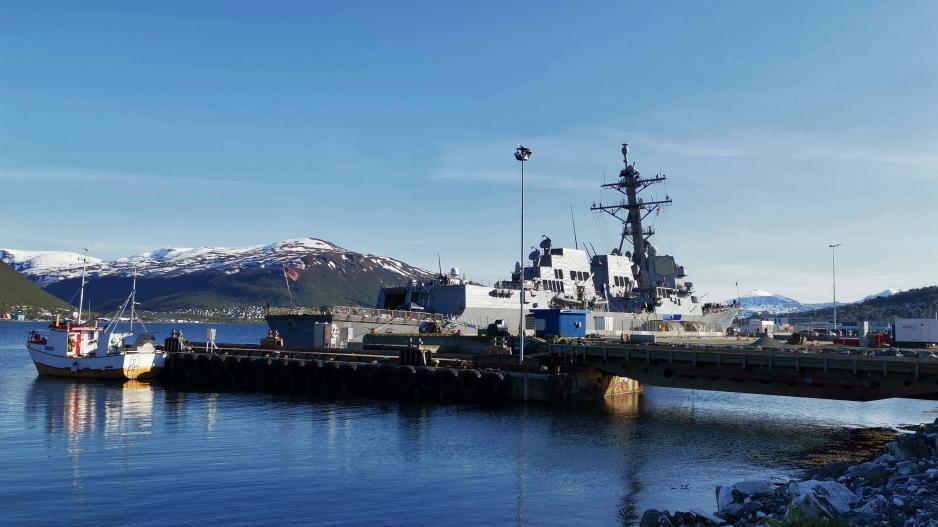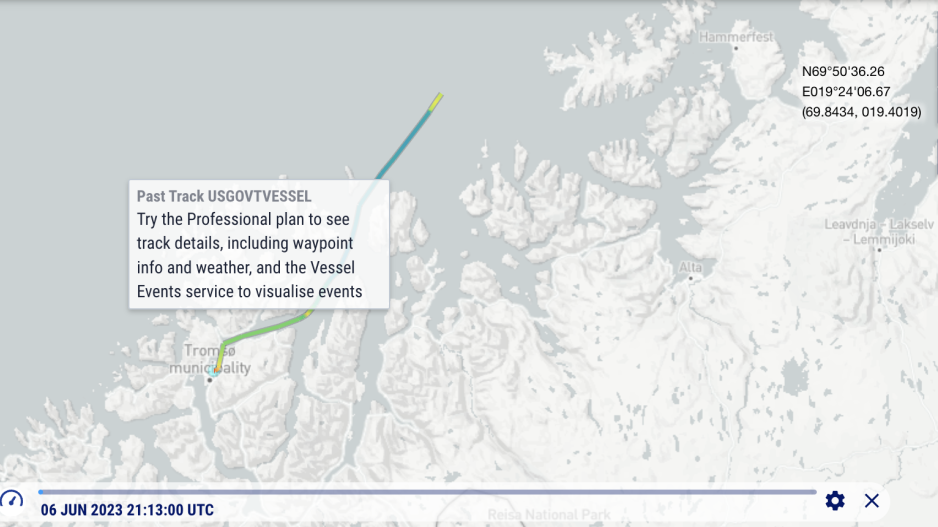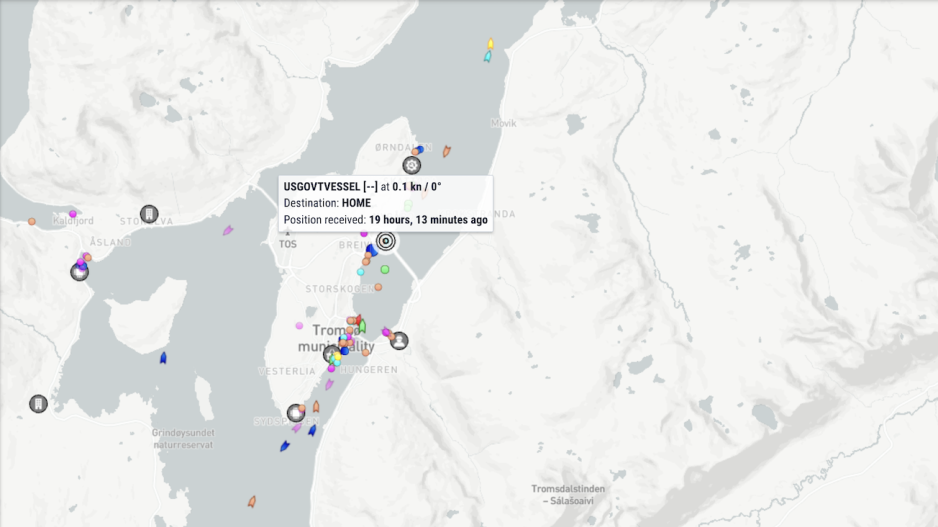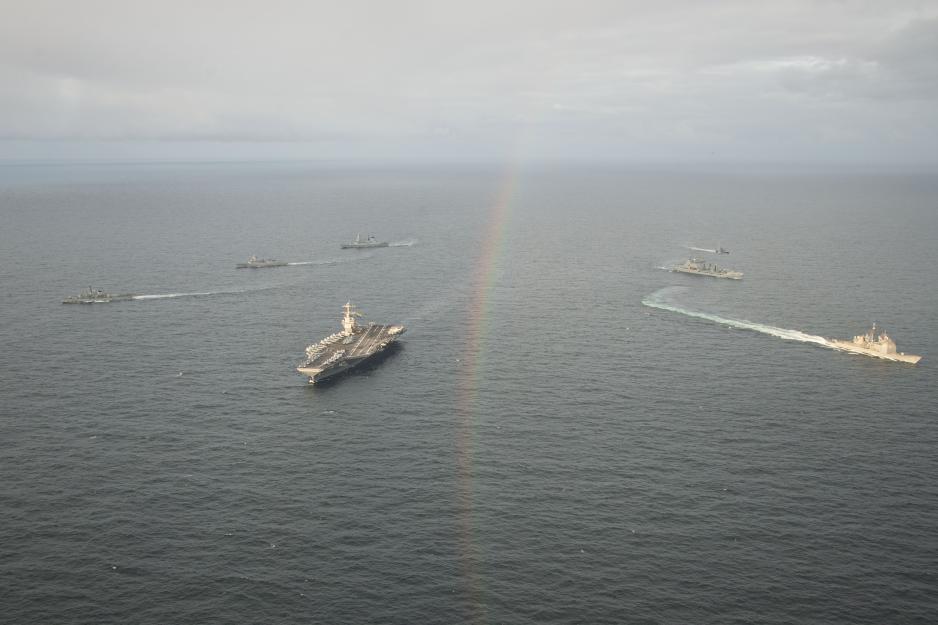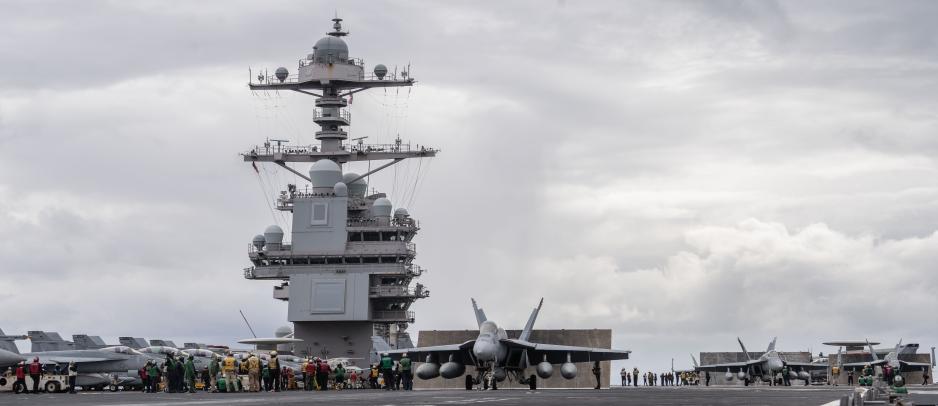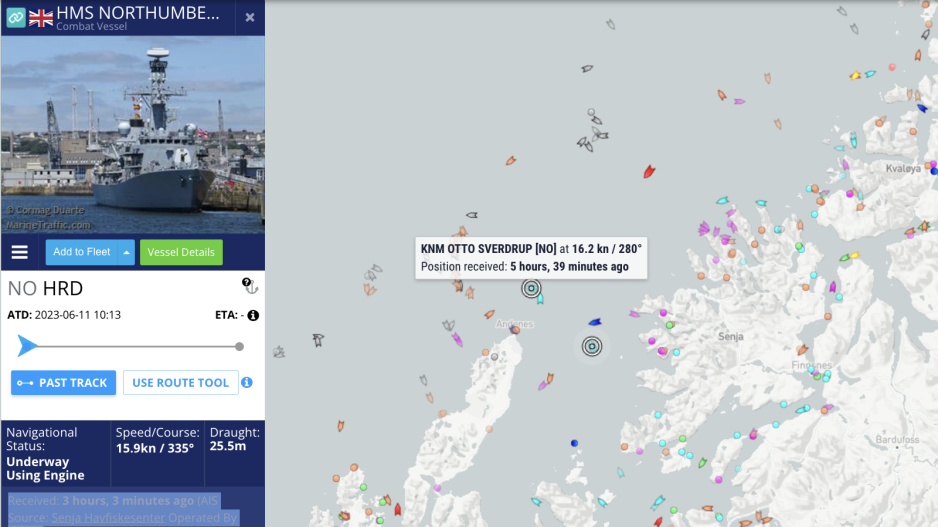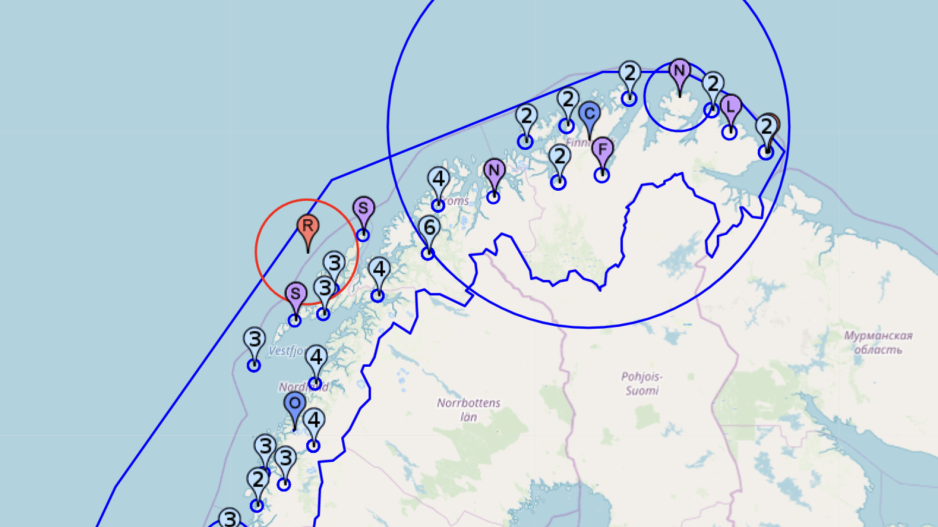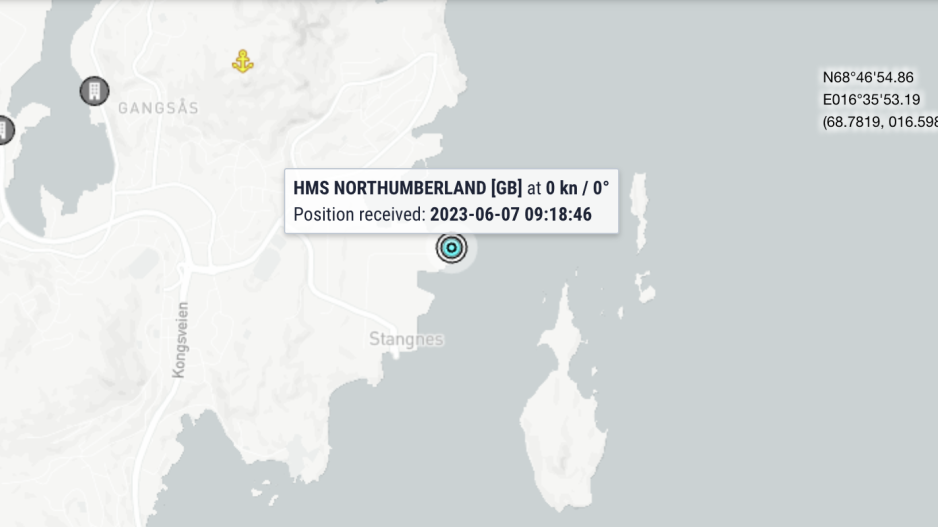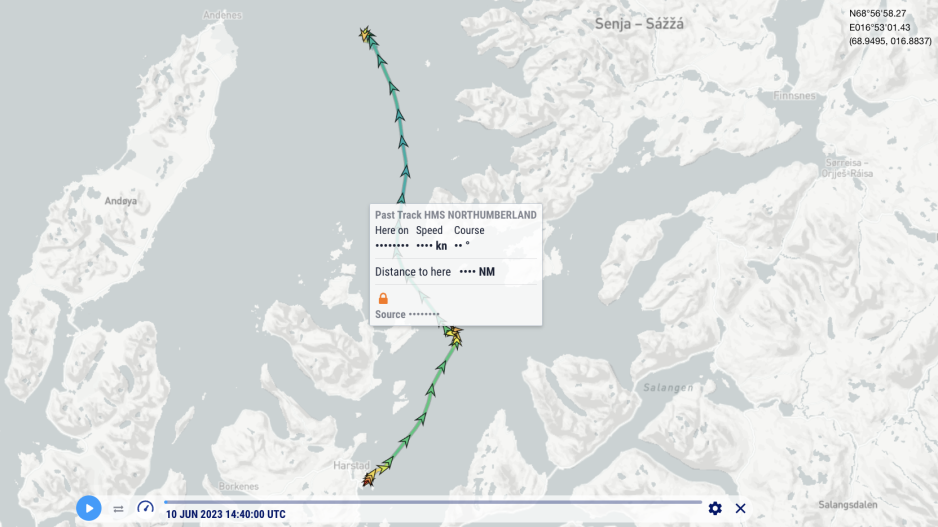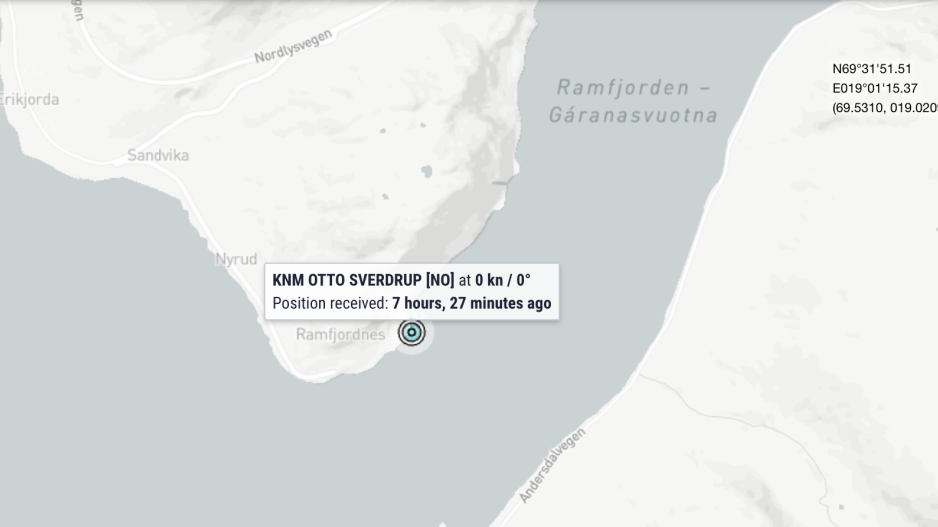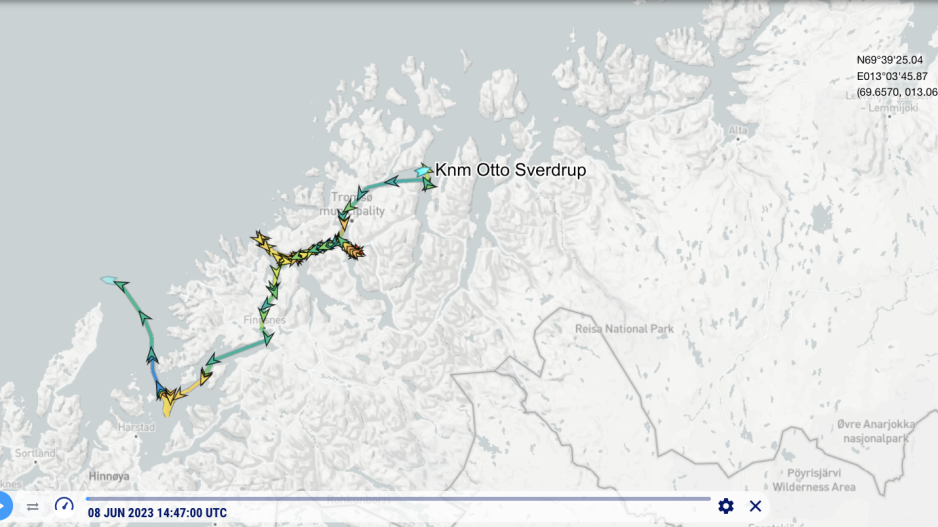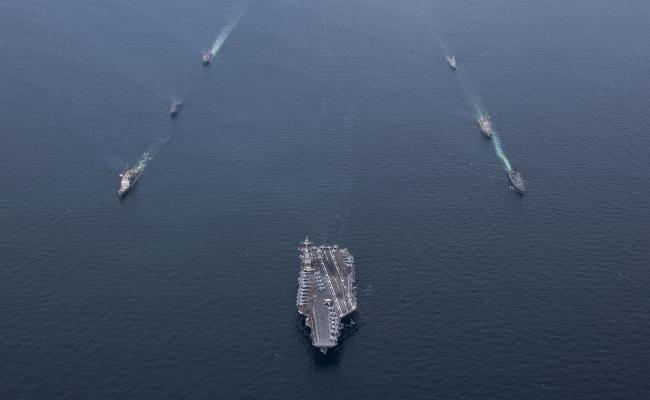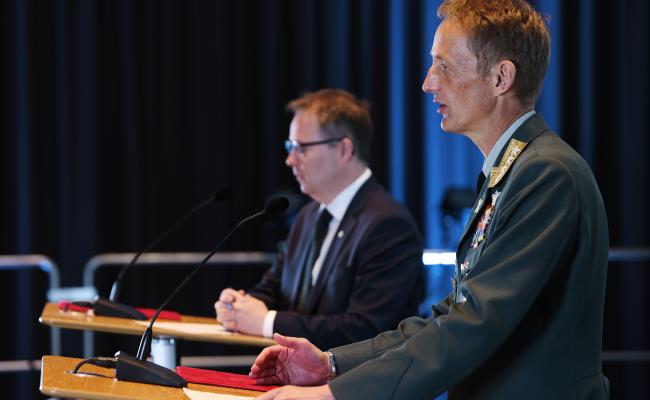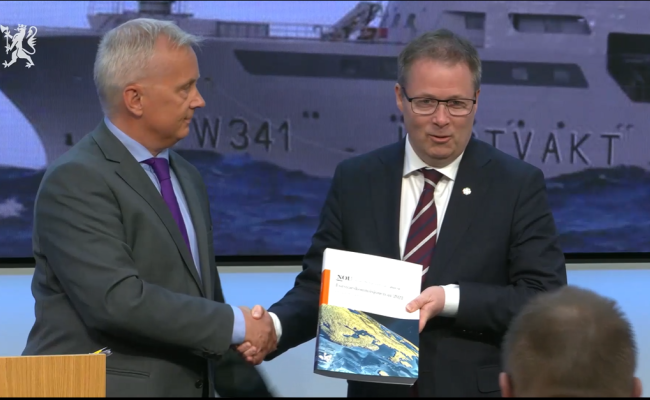"Conducting integrated and high-intensity activities with our Allies and partners in various maritime environments is what keeps our carrier strike group well prepared, ready, and postured to collectively deter threats and defend the Alliance,” says Rear Adm. Erik Eslich, Commander, GRFCSG Carrier Strike Group 12, in a press release.
According to the UK's Royal Navy, the British ships and KNM Steil first acted as "hostile" forces to test the American-Norwegian ship group's defense abilities.
Furthermore, during the Viking Trident, the American, British, and Norwegian marine forces practiced protecting the aircraft carrier against missile attacks and air strikes from several waves of "hostile" aircraft.
These were American F/A-18 Super Hornet fighters and B1-B strategic bombers, as well as Norwegian F-35 fighters. It is not known whether this activity was part of the aforementioned exercise within the ACE framework.
All Norwegian branches of defense
The USS Gerald R. Ford has also trained with the Norwegian Army and the Special Operations Command. The Norwegian Armed Forces write that all of its branches of defense have had valuable training with the aircraft carrier.
"With the war in Europe, unity in NATO is more important than ever to ensure our collective security. Port visit and cooperating operations for the entire Norwegian Armed Forces with the aircraft carrier are clear signs of this unity," says the Commander of the NJHQ, Lt. General Yngve Odlo, in a press release.
"The fact that our closest allies receive experience in operating in our immediate areas and that our forces gain experience with operating with one of the world's most powerful weapon systems, builds security for Norway and safety for the population," adds Odlo.
The NJHQ does not want to describe how the Army and special forces have co-trained with the USS Gerald R. Ford.
The Norwegian Navy has also reported successful live-fire training with the Naval Strike Missile (NSM) outside Vesterålen in Northern Norway on the night of Wednesday. TV 2 reports that KNM Otto Sverdrup sank a decommissioned corvette, KNM Æger, with such a missile. No allied participation is mentioned for this activity.
